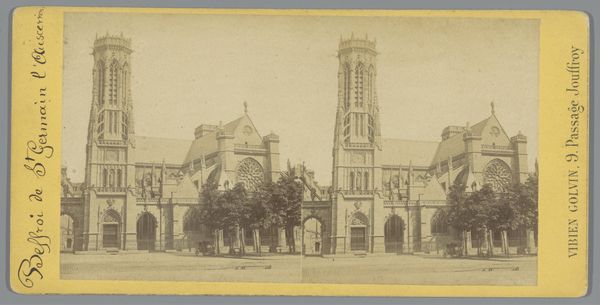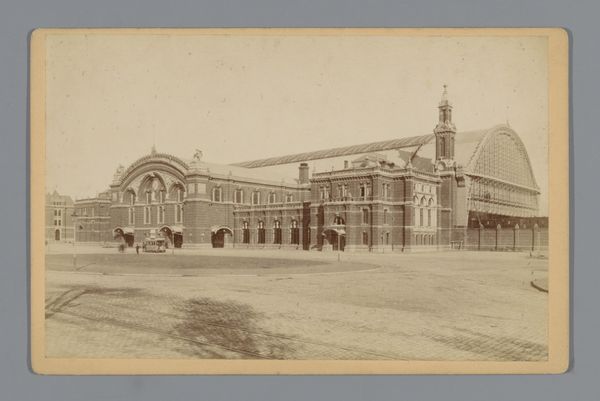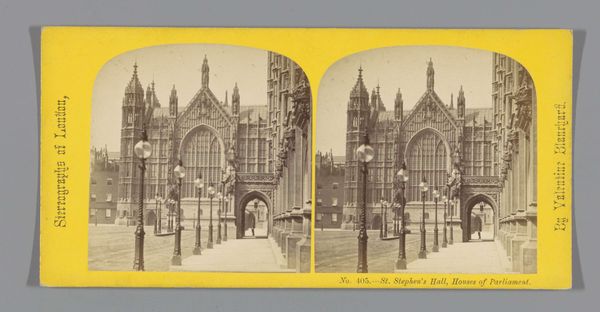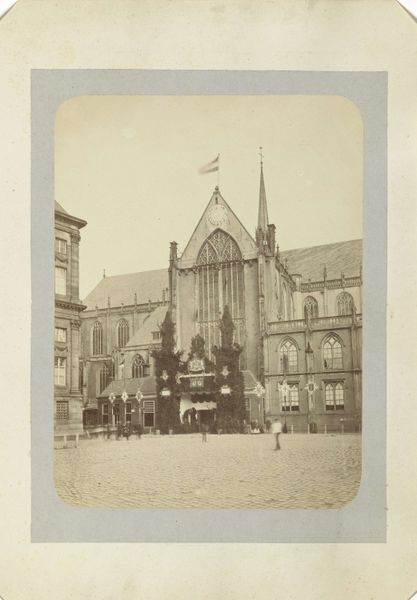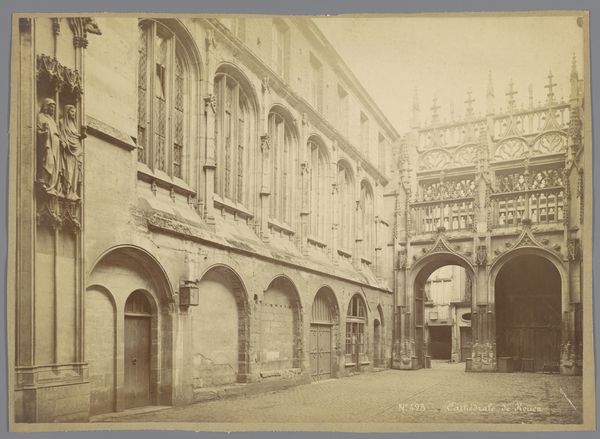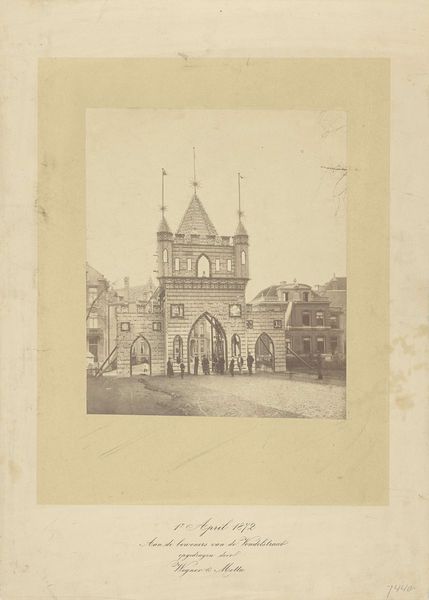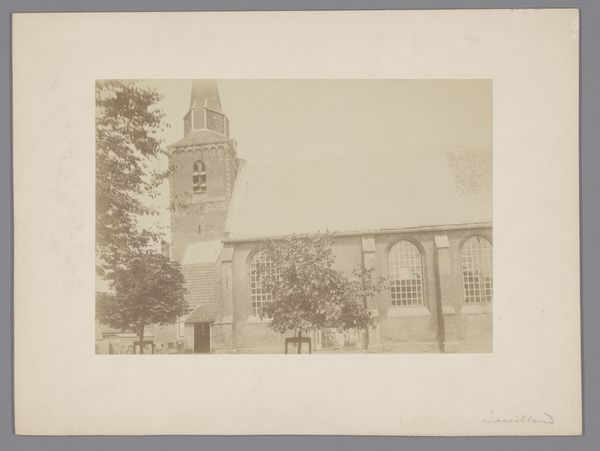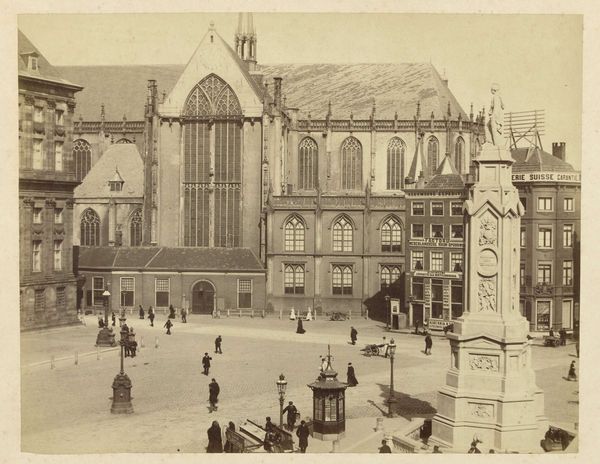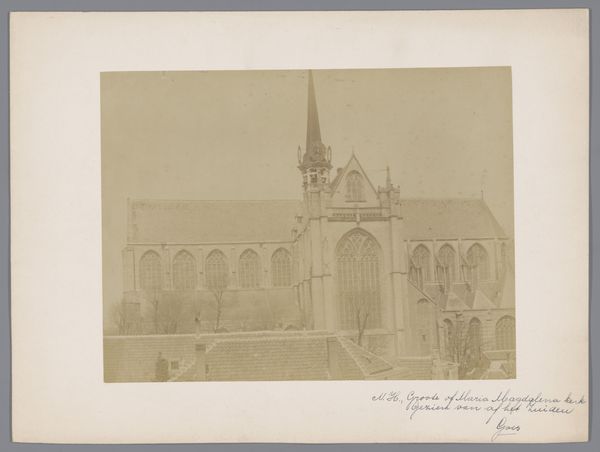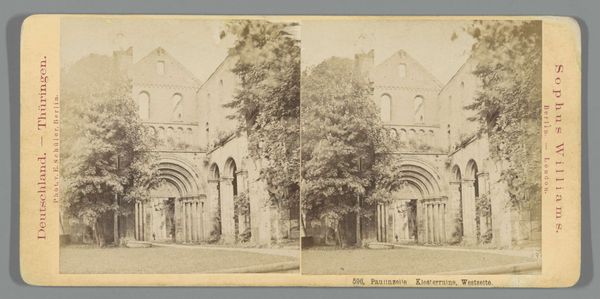
photogram, photography, architecture
#
photogram
#
landscape
#
photography
#
coloured pencil
#
architecture
Dimensions: height 85 mm, width 173 mm
Copyright: Rijks Museum: Open Domain
Curator: The basilica here looks somber; the architecture dominates, seeming almost heavy with its ornate details. Editor: Indeed. The Basilica of the Holy Blood in Bruges, captured here between 1873 and 1890 in this striking photogram. One is immediately aware of how space, or perhaps its manipulation through architectural symbolism, reflects the values of this space. Curator: Precisely. Consider the composition; the upward thrust of the bell tower contrasted with the solid base. This tension might mirror a dialogue between the earthly and the divine. The Basilica's relics certainly fuel that symbolism. Editor: A compelling point, that relic culture influences the architecture. I also see it in how light enters – or rather, how restrained it is. The narrow windows project more than mere light. Curator: Think too of the intricate facade above the doorway: carved figures seemingly poised to convey messages. These elements project continuity, not just of aesthetic but belief. They visually bind worshippers, drawing on history for identity. Editor: And how that detailed entryway is framed, creating an opening that leads directly upward. A carefully structured path to higher transcendence? There’s an intriguing semiotic at work regarding verticality. Curator: Very astute. The architects aimed to make this space deeply significant. It represents so much for those that worship here, doesn't it? This image highlights how intertwined a space and its symbols are. Editor: Absolutely, it gives so much nuance. Reflecting on the architecture through photography allows one to appreciate not just structure and form, but how buildings are a window into collective meaning.
Comments
No comments
Be the first to comment and join the conversation on the ultimate creative platform.
